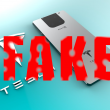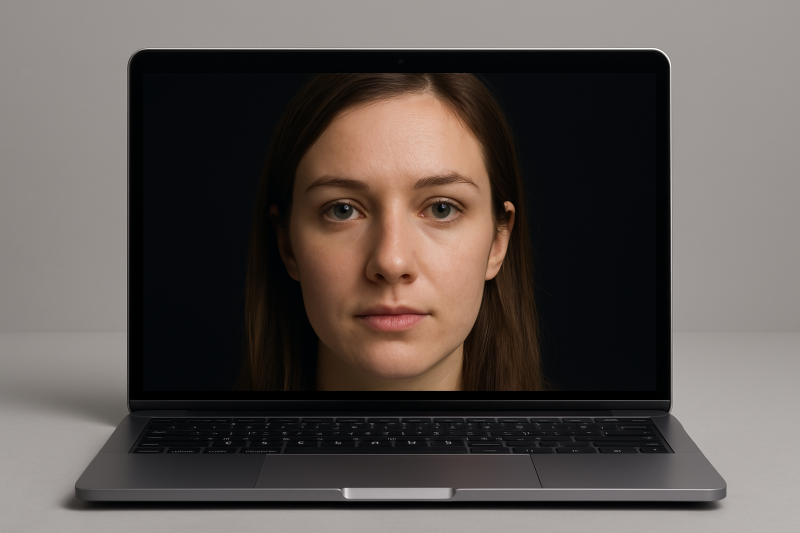Table of Contents Show
Deepfake technology – powered by artificial intelligence and machine learning – has opened up a new world of possibilities in content creation. By synthesizing human likenesses in audio and video, this technology can make people appear to say or do things they never did. The results can be startlingly realistic, sometimes indistinguishable from authentic footage. Initially developed for harmless entertainment purposes – like face-swapping in movies or bringing historical figures to life in documentaries – deepfakes have quickly evolved into something far more complex and ethically ambiguous.
While there’s genuine creative potential in deepfakes, their misuse poses enormous ethical challenges. From spreading disinformation and violating privacy to threatening reputations and disrupting democracy, the implications are far-reaching and deeply concerning. In this article, we’ll explore these ethical dilemmas in greater depth, unpack the societal risks, and discuss how individuals, companies, and governments are working to respond.
Ethical Concerns
Misinformation and Disinformation
Perhaps the most glaring concern with deepfakes is their ability to spread false information in ways that feel disturbingly real. Unlike traditional fake news, which can often be recognized by poor grammar or obvious bias, deepfakes replicate the nuance of human behavior and speech. A deepfake of a political leader declaring war or endorsing a controversial view could spark panic, incite violence, or alter the course of elections before the deception is uncovered.
What makes deepfakes especially dangerous is their ability to undermine trust. If everything can be faked, how do we know what’s real? This phenomenon is often referred to as the “liar’s dividend” – the idea that once deepfakes are widespread, even truthful content can be dismissed as fake. Public discourse suffers, and the ability to reach consensus on objective facts becomes even more elusive.
For example, in 2018, a deepfake video of Barack Obama – created by BuzzFeed in collaboration with actor Jordan Peele – was released as a public awareness campaign. It showed the former president saying things he never actually said, illustrating how easily even a respected public figure’s words could be forged. Although meant as a warning, the video demonstrated just how powerful and persuasive deepfakes could be in the wrong hands.
Privacy Violations
Deepfakes don’t just harm public institutions; they can also target individuals in profoundly invasive ways. One of the most notorious applications of deepfake technology has been the creation of non-consensual explicit videos, often involving celebrities and, increasingly, ordinary people. These manipulated videos can damage personal relationships, destroy reputations, and cause severe emotional distress.
This kind of exploitation often occurs without the victim’s knowledge until the content is widely shared. Even if the material is eventually debunked, the emotional and reputational toll can be irreversible. Victims frequently face a burden of proof – having to convince others that what appears so “real” is entirely fake. In this way, deepfakes become tools of digital violence, especially targeting women and marginalized groups.
Malicious Use
Deepfakes are also increasingly being used in cybercrime. Imagine a CEO seemingly instructing a subordinate via video or audio to transfer money to a fraudulent account – this has already happened. In 2019, criminals used AI-based voice technology to impersonate the CEO of a German energy firm, successfully convincing a British employee to transfer $243,000 to a Hungarian bank account source: The Wall Street Journal.
Deepfake-enabled blackmail, identity theft, or character assassination can easily slip into mainstream criminal tactics. As the technology becomes more accessible – available through open-source platforms and online apps – the threat grows.
Potential Impact on Society
Erosion of Public Trust
As deepfakes become more sophisticated, people may start questioning everything they see and hear online. In a world where any video or voice clip could be fabricated, the burden of proof shifts unfairly onto victims and media outlets. Trust in journalism, law enforcement evidence, and even personal communication could deteriorate.
If the average citizen starts doubting news reports or official communications due to the potential of deepfakes, the very foundation of public trust is shaken. This erosion could breed cynicism, disengagement, or radicalization – none of which are conducive to a stable society.
Political Manipulation
The use of deepfakes to influence elections or political debates is one of the most urgent ethical concerns. Political candidates, activists, or public figures could be targeted with false statements or incriminating footage, potentially swaying voters based on lies. Even if the deepfakes are later debunked, the damage could be done – especially in a fast-moving news cycle or just days before an election.
Democracies are particularly vulnerable to such manipulation. Disinformation campaigns using deepfakes could come from foreign adversaries, interest groups, or domestic political actors. The result: weakened democratic institutions and increased polarization.
Reputational Harm
A single deepfake can ruin a person’s life. From fake videos suggesting infidelity to doctored footage of workplace misconduct, these digital forgeries can have very real-world consequences. Employers, friends, and family members may act on what they see before verifying the truth.
Even celebrities aren’t immune – actress Scarlett Johansson has spoken out against the use of her image in non-consensual deepfake pornography, acknowledging that legal action is often ineffective once the content is online. For everyday people, recourse is even more limited, particularly in countries without robust data protection or image rights legislation.
Addressing the Challenges
Detection Tools and AI Countermeasures
In response to the threat of deepfakes, researchers and tech companies are racing to develop detection tools. These tools analyze inconsistencies in blinking, lighting, facial expressions, and voice modulation. However, it’s a constant cat-and-mouse game – just as detection improves, so do the fakes.
Facebook, Microsoft, and academic institutions like MIT and UC Berkeley have collaborated on projects to develop detection algorithms. One notable initiative is the Deepfake Detection Challenge (DFDC), hosted by Facebook AI in partnership with the Partnership on AI, which encouraged researchers to create tools for spotting fake videos.
But the detection landscape is fragmented, and there’s no universal standard for what qualifies as a deepfake or how to measure its authenticity.
Legal and Regulatory Action
Some governments are attempting to get ahead of the curve with legislation. In the United States, states like California and Texas have passed laws making it illegal to create or distribute malicious deepfakes, especially those intended to interfere with elections or used in pornography without consent.
The UK government has also considered deepfake-specific laws as part of broader online safety regulations. However, the pace of legal change is slow compared to the speed of technological development. In many jurisdictions, existing laws around defamation, fraud, or harassment may not be adequate to address the nuances of deepfake content.
Public Awareness and Media Literacy
One of the most powerful tools in the fight against deepfake misuse is public awareness. If people are better educated about the existence and dangers of deepfakes, they’re more likely to question suspicious content and less likely to fall for hoaxes.
Media literacy programs in schools, online fact-checking tools, and public service campaigns can all help raise awareness. Projects like WITNESS, an organization that works on video verification and ethical tech use, are also contributing to this effort by providing resources for journalists and activists.
Future Outlook
The Double-Edged Sword of Innovation
It’s important to remember that deepfakes are not inherently evil. In filmmaking, video game development, education, and even therapeutic applications (like giving a voice back to those who’ve lost theirs), deepfakes have promise. The challenge lies in separating ethical uses from harmful ones – and ensuring adequate safeguards are in place.
Vigilance and Ethical Responsibility
In the end, managing the ethical dilemmas posed by deepfake technology requires vigilance on multiple fronts: technical, legal, and cultural. Developers have a responsibility to consider the consequences of their creations. Policymakers must act swiftly to regulate malicious use. And we as individuals must sharpen our critical thinking skills in an age where seeing is no longer believing.
Conclusion
Deepfake technology is as fascinating as it is frightening. With the power to create entirely synthetic yet believable media, it challenges our most basic assumptions about truth and trust. From manipulating political narratives to destroying personal reputations, the ethical implications are vast.
Yet with awareness, regulation, and innovation in detection, we can mitigate many of the dangers. The key lies in balance – leveraging the creative potential of deepfakes while drawing clear ethical boundaries to protect individuals, institutions, and society at large.
As the digital world continues to evolve, our ethical frameworks must evolve too. Because the future isn’t just about what’s possible – it’s about what’s responsible.









